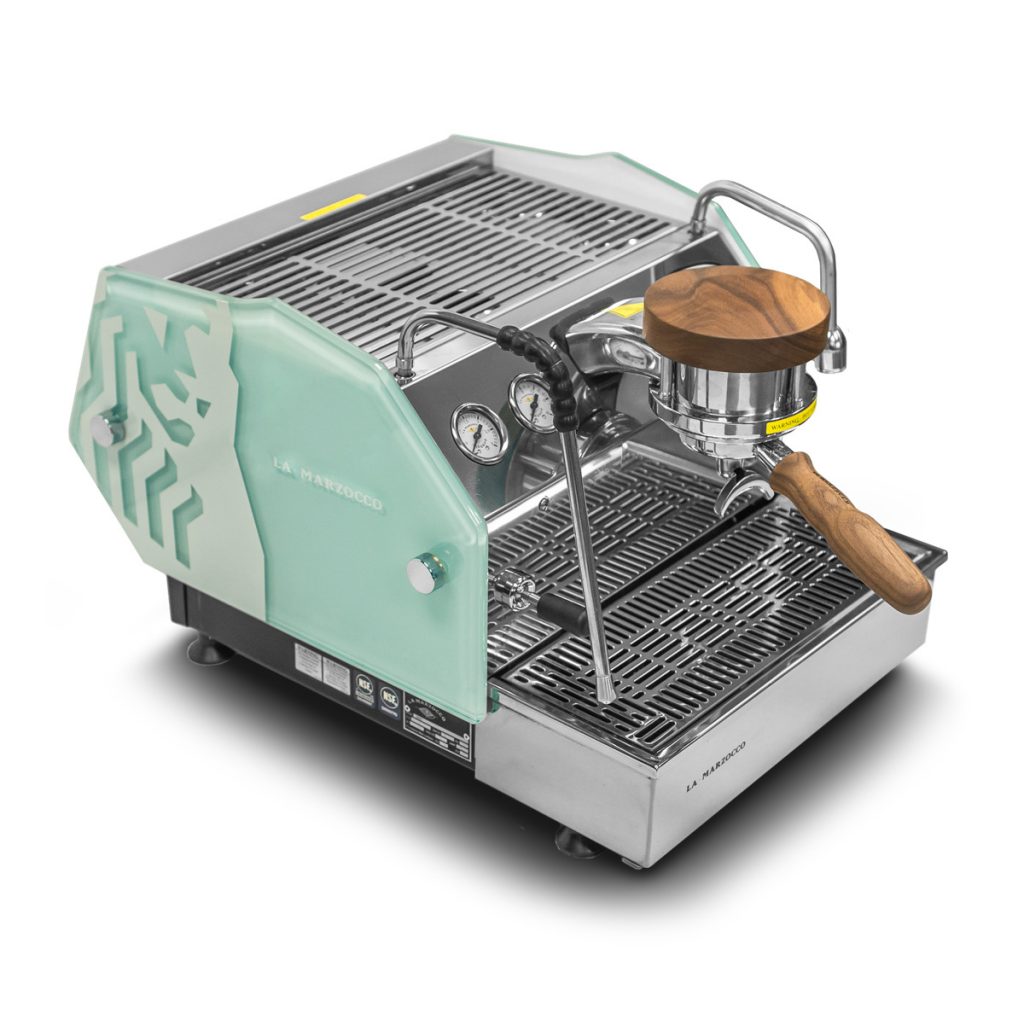Interview: Kent Bakke of La Marzocco
Learning about the history and future of espresso in a conversation with the CEO behind one of the world’s most beloved espresso machines

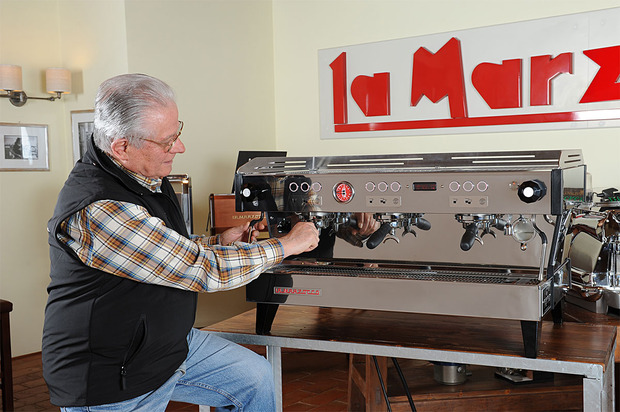
Named after the fiercest predator of the animal kingdom, La Marzocco—which translates to lion in Italian—is aptly known for their roaring, state of the art espresso machines. But at the factory in Tuscany, things are anything but savage—the staff often shares their lunch hour together at a small trattoria across the street. And at the Seattle headquarters, a barbecue grill stands by the product-testing area ready to be of service for team grilling sessions. At the helm of this happy caffeinated world is CEO Kent Bakke. To say he loves all things espresso is an understatement. Even on the La Marzocco website Bakke’s description says it all: “Kent Bakke, CEO: Friendliest guy you’ll ever meet. Depository of all things espresso and Italy. Human directory of all coffee people.” La Marzocco is that kind of company.
When we were invited to spend the day with Bakke in Seattle, we jumped at the chance. Our visit included some time in their showroom, learning to pull espresso shots and steam milk with barista Sarah Dooley, time with Scott “Mr. Gadget” Guglielmino in the machine-checking area with a tour of their extensive vintage espresso machine collection and lunch at the Whale Wins with Bakke, who shared the story of what drew him to dedicate his life to making the perfect cup of espresso.

Why do you feel that the coffee community is so focused on pour-overs and filter coffees right now?
When I started working in the world of coffee 35 years ago, espresso was totally new. And now, espresso has become more mainstream, but the vast majority of coffee that is consumed in the North American market is still brewed coffee. What is experiencing great growth right now is a rediscovery of coffee. There is incredible growth in the appreciation of high-quality coffee—in all of its forms and in various preparations. Like food and other beverages, people enjoy different types of coffees on different occasions, and with different preparations.
What about the tradition of espresso originally drew you in?
It was espresso machines that drew me into the tradition of espresso. The first espresso machine I ever saw was at Hibble and Hyde’s—the restaurant I bought in Pioneer Square in Seattle in 1977. There were just a handful of espresso machines in Seattle, including the one at my restaurant. I was very curious about the machines and how they worked and very interested in understanding what espresso coffee was. Espresso machines were certainly simpler back then, but there were also fewer ways to learn about them. There was no internet, no instruction manuals, no repair manuals, nothing to tell me how the thing worked, but the systems were easy enough to generally figure out.
It all seemed pretty exotic to me at the time. I didn’t know anybody that could tell me anything about it—other than the fact that it was Italian. I traveled to Italy in the fall of 1978 to talk with espresso machine manufacturers to see if I could establish relationships to begin importing them into the US.
Upon meeting with La Marzocco and coming to understand that they had been in business since 1927, I got to meet people who were literally part of the history of espresso coffee. On that trip I met the Bambi brothers, Bruno and Giuseppe, who started the company. It became clear that La Marzocco is part of the tradition of espresso. So that was my first historical introduction and through that encounter I got some understanding of the different machines and the evolution of machines since the creation of espresso coffee.

Describe why you feel espresso is so unique and special?
Well it used to be referred to as the world’s fastest way of brewing a cup of coffee. It’s distinct in terms of the beverage and it’s distinct in the process from all other coffee brewing methods. It’s a beverage that concentrates the organoleptic, particular flavors of a coffee or blend qualities, the sensory notes of a coffee or blend that is very different from all other brewing methods.
The term espresso also refers to being expressly made for someone—for one person. So it’s unique in that tradition. A lot of filter coffee is made for many people. So it is also unique in the service: One barista crafting one beverage for one person.
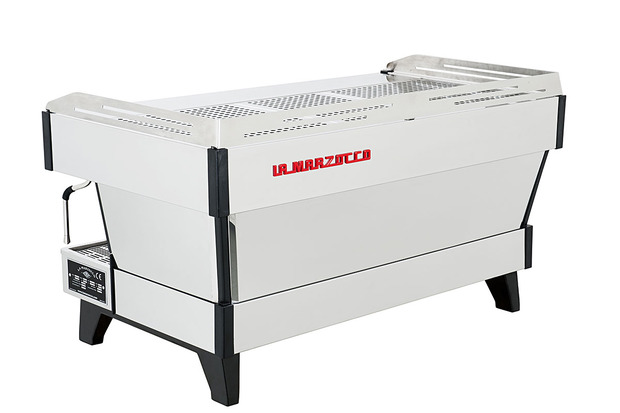
What innovations are the La Marzocco team working on now to evolve the technology while preserving the traditional nature of espresso?
With the Strada EP—a machine that you can program the pressure of the extraction—it hearkens back to some of the things that you could do with a piston machine from the 1950s. It also opens up a greater opportunity to explore the influence of variable pressures during extraction and the results in the cup. We feel that we are just at the very beginning stages of understanding how this technology can be applied to help baristas and roasters learn what is possible with espresso coffee.
La Marzocco has always strived to create the tools, the platform, and then let our customers and the people who use our machines explore and learn—and evolve or revive traditions in espresso preparation. For the future we continue to evaluate the past. Improving on past innovations and continuing to developing the relationships between where coffee roasting and blending is going, and how innovation in machine design can complement new trends in coffee roasting. There’s a new focus on the growing and processing and roasting and blending of coffee. It continues to change and evolve. We strive to create equipment that provides the roaster with a platform to help them achieve what they hope to get out of the coffee they roast, and make the very best of the high quality coffee that is available today.
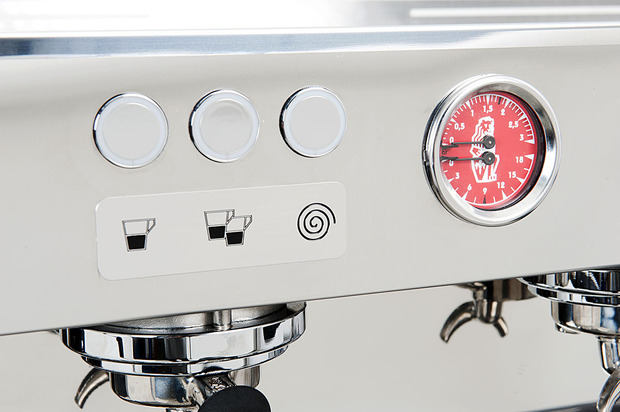
You also now distribute Mazzer grinders and Marco water boilers. How does grind and water figure into a good cup of espresso?
Coffee grinding is as important as the espresso machine and we feel that a great espresso machine needs a great grinder. We have a very strong working relationship with Mazzer. They are a company that is very passionate about the quality of espresso coffee and delivering the highest-quality grinders. We continue to develop good synergies with Mazzer and we are continuing to work together on research around coffee grinding.
Water is the other component that is extremely important to coffee brewing in general. Although we are a manufacturer of espresso coffee machines, we embrace coffee in all of its forms including brewed coffee. As part of our customer service philosophy, we’re proud to be working with Marco and delivering precision hot water delivery equipment for other brewing methods.
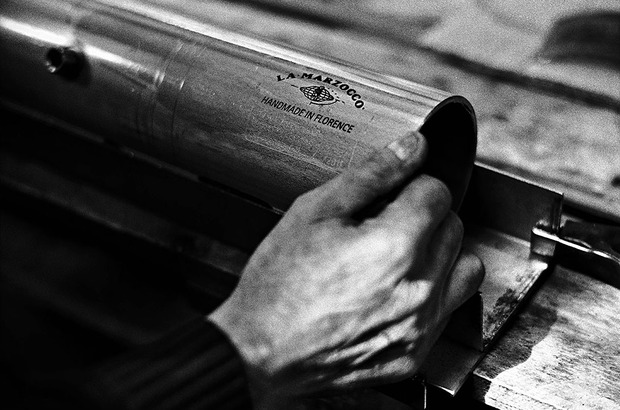
How often do you visit the La Marzocco factory in Italy? Can you describe the company culture there and the team that builds the machines?
I have the privilege of visiting the factory four to five times each year. La Marzocco is one company with one culture and one philosophy. We’re an artisan producer. All of our equipment is assembled by hand at our factory just outside of Florence. Although our brand has worldwide recognition, we are still one of the smallest manufacturers. We really think of ourselves as a family and we like to think of our customers as family as well. The team that handcrafts our machines are dedicated, experienced and passionate.
Once the machines are back in Seattle your team opens every box and checks every machine. Why is this step so important?
The machines have to travel a long distance, and things can happen in shipping that are not always visible externally. So we feel it is important that we know, that we can verify that the machine is in perfect condition before it leaves our warehouse in Seattle. It’s our way to add just a little more love to the product. We want every customer who receives our machines to receive the best product, and have a great experience with it. Right from the start.
Photos courtesy of La Marzocco
